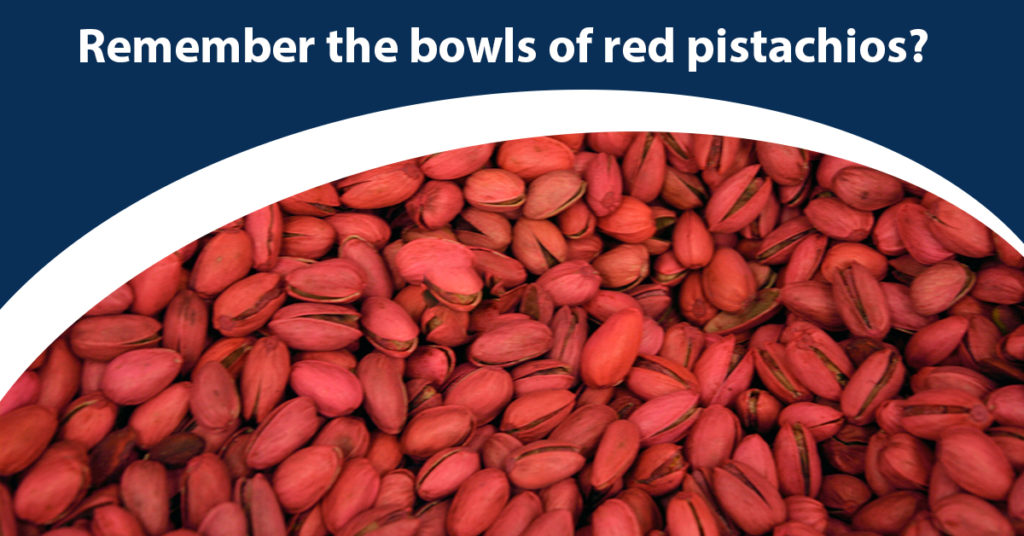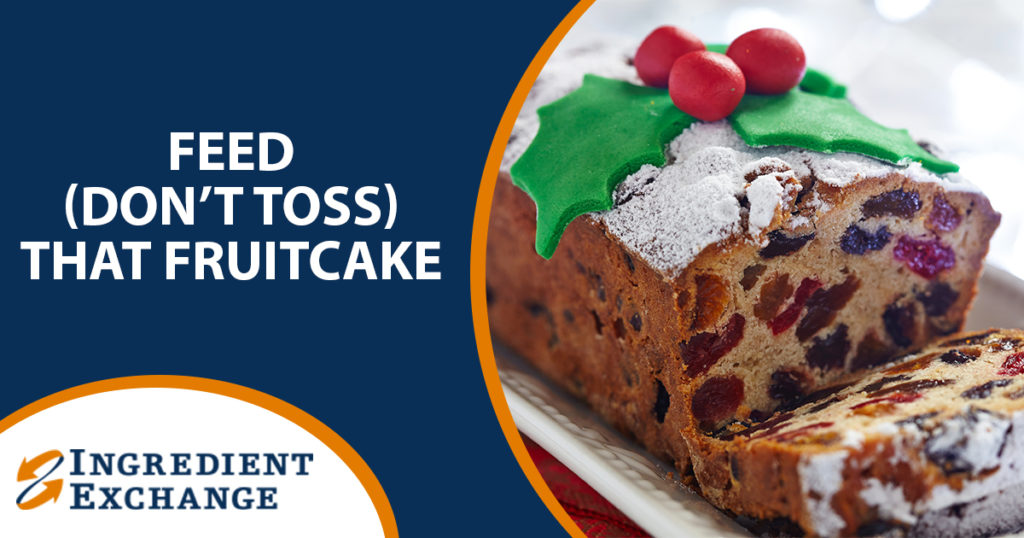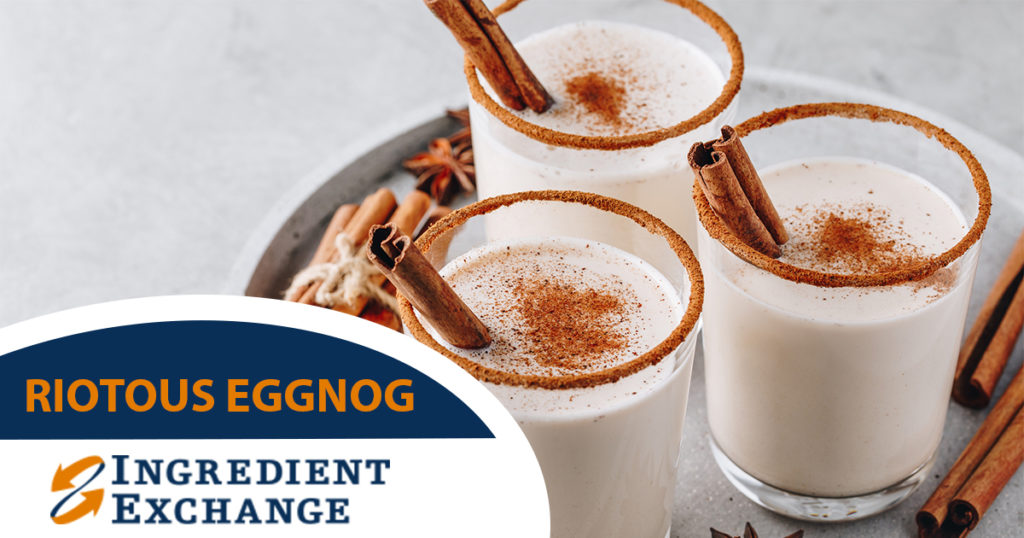In the busy months leading up to the holiday break, food industry businesses (from manufacturers to brokers) handle the many ingredients that eventually grace our festive tables.
As we head into the holidays, let’s take a look at three traditional foods and the stories that make them memorable.
1) Remember the bowls of red pistachios?

The cardinal-colored nuts were once a much-loved holiday-table snack food. (They were also hard to sneak undetected, as the scarlet coating stained suspects’ fingertips and lips.)
Why were pistachios red?
U.S. importers once sourced pistachios from the Middle East. Due to harvesting techniques, the shells were mottled and unattractive. To make the nuts more appealing to consumers, processors coated the shells with red dye.
Why don’t we see red pistachios now?
Two key events changed the dyed pistachios’ availability in the U.S.
- In the 1970s, the U.S. imported red pistachios mostly from Iran. However, in the following decades, U.S. and Iran political tensions resulted in on-again, off-again trade embargos. The result was diminished imports of Iranian pistachios.
- California started growing pistachios, and the industry took off. Today, west-coast growers supply 99 percent of U.S. pistachios. The savvy nut farmers also developed harvesting methods that eliminated unattractive stains and the need to dress up the shells with red dye.
However, red pistachios are available still from specialty vendors—perfect for adding a splash of red to the festive snack lineup. That said, colored-pistachio purists (and Naked Gun fans) should note that the U.S.-dyed version tends not to stain fingers and lips.
2) Feed (don’t toss) that fruitcake

In the States, fruitcake often gets a bad wrap—possibly fuelled by Johnny Carson’s famous quote, “There is only one fruitcake in the entire world, and people keep passing it around.”
However, given the success of U.S. fruitcake bakeries (including two in southern towns— Georgia and Texas—that continue to compete for the title Fruitcake Capital of the World), consumers like and buy the dense dessert cakes for the holidays.
For example, the Texas fruitcake maker Collins Street produces about a million cakes each year, baking around 30,000 units a day during the holiday season.
Of course, fruitcake has a long history, with roots in many cultures, including Germany, Italy, and England.
The older, the better
The denser varieties stem from Britain—dark, moist cakes ladened with liquor-soaked dried fruits that, like good red wine, get better with age. Fruitcake purists wouldn’t dream of cutting a ‘young’ cake.
Made several months ahead of the holidays, the cake is wrapped in layers of baking paper, sealed in an airtight tin, and kept in a cool, dark cupboard. To keep the cake moist and enhance the aging process, the cake connoisseurs ‘feed’ the cake with additional liquor.
Every two weeks, they peel back the protective layers of paper, poke deep holes in the cake with a skewer then drizzle the surface with rum, brandy, or whiskey. They wrap up the cake again, returning it to its ‘cellar’ until the next boozy bath.
Come the holidays (even the following year), the mature cake is ready to eat. It’s served as is, or brushed with apricot jam then ‘draped’ in rolled marzipan and royal icing.
Here’s a quick video of famous British baker Mary Berry’s fruitcake recipe.
3) Riotous Eggnog

It’s safe to say that eggnog is the holiday ‘food’ tradition that divides. People either love it or hate it. Is it the name that causes many to recoil—what’s not to love about drinking eggs?
For those who adore the festive drink (the ones who hover near the punch bowl, priming palm-sized cups with golden goodness), could they love it enough to start a riot?
It happened.
Almost two centuries ago, young West Point military academy students (including the future president, Thomas Jefferson), upon hearing that the new superintendent banned the alcohol-laced beverage, started an eggnog riot.
Not to be deprived of their beloved beverage, resourceful cadets took matters into their own hands, smuggling gallons of contraband whiskey into the barracks.
Cadets partied into the wee hours of the morning (mostly singing). Soon, the commanding officer got wind of the goings-on and sent in guards to round up the eggnog-guzzling rebels.
All hell broke loose.
As guards and cadets clashed, pistol-wielding students smashed windows and furniture and threatened their superiors’ lives. No one was hurt, but out of the seventy-or-so rioting cadets, around thirty were court-martialed and expelled.
And yes, the young Thomas Jefferson was involved in the eggnog shenanigans. However, he didn’t participate in the riot, retreating instead to bed when the guards showed up.
Creating new holiday food stories
During the frantic weeks ahead of the holidays, food industry folk work tirelessly to deliver the holiday foods everyone loves.
As a result, whether serving rare red pistachios, riot-worthy eggnog, or full-bodied fruitcake, people get to create new stories as they share their favorite dishes with family and friends.
At Ingredient Exchange, we can take leftover inventory off your hands (including pick up) and turn it into cash. Got unusable ingredients you’d like salvage? Give us a call today: 314-872-8850
